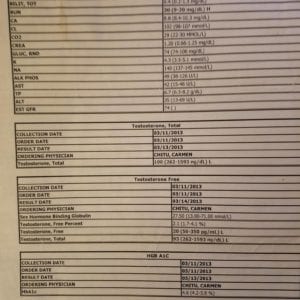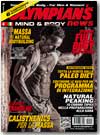Editors Note: Here’s a guest article via Carl Juneau, PhD. Doctor Juneau is the developer of the Dr. Muscle App, which I recommended previously in a past article about how so many bodybuilders are stuck in the 70’s readers may recall. The app does a solid job of removing the guess work for people looking to utilize more modern approaches than typical – and less effective – linear training models. Feedback from BZ followers has been excellent.
How 2 Set Styles May Build Muscle In Half The Time
By Carl Juneau, PhD.

How many sets do you do when you work out to build muscle? When you bench press? When you squat? 3 sets, right?
For most people, 3 sets seem just right. 2 sets… you’re leaving too much in the bank. 4 sets… it’s hard work. But 3 sets! Boom!
The problem with 3 sets is that they take a long time to do. If you take 1, 2, or even 3 minutes of rest between sets, you’ll spend up to 10 minutes training just one exercise. When you add up your other muscles groups, you can easily spend an hour and a half in the gym. Many guys do.
But what if I told you there’s a better way? 2 ways, actually! Ways to do your sets that let you build just as much (or more) muscle… in about half the time? Yeah! That’s right. These set styles build muscle in half the time because each set is the equivalent of about 3 normal sets. I’m talking about drop sets and rest-pause sets.
Let’s look at what the science says:
Drop sets build muscle in half the time
Fink et al. (2017) did a study on drop sets. In that study, 16 lifters were divided in 2 groups. Lifters in group 1 did a single drop set of cable triceps pushdowns. They started with a 12RM weight. When they hit failure, they decreased their load by 20% 3 times. Lifters in group 2 did 3 normal sets @ 12RM with 90 seconds between sets (just the kind of lifting you would see a lot of guys in most gyms do). On average, lifters in the drop-set group took less than half the time to work out (145.4 seconds, vs. 315.5 seconds for lifters in the normal-set group). This difference was significant (p < 0.001). They all trained for 6 weeks. After 6 weeks, lifters in both groups gained triceps cross-sectional area (10% in group 1 and 5.1% in group 2, no significant differences between groups). Effect size was higher in the drop-set group (0.47) than in the normal-set group (0.25), suggesting that drop sets were actually more effective at building muscle. However, the authors did not check to see if the effect sizes were statistically diffrent, so we can’t tell for sure.
Rest-pause sets build muscle in half the time
Prestes et al. (2017) did a study on rest-pause sets. A rest-pause set is a series of reps carried out to failure, followed by a short rest, followed by more reps to failure. In that study, lifters “performed an initial set with 80% of 1RM until failure with subsequent sets performed with a 20-second inter-set rest interval until completing a total of 18 repetitions.” The control group performed 3 normal sets of 6 reps @ 80% 1RM with 2-3 minutes between sets (again, just the type of training you’d expect to see in a lot of gyms). Both groups trained for 6 weeks. After 6 weeks, lifters in the rest-pause group gained more muscle thickness in the thigh (11% vs. 1%, p < 0.05), but not in the arm and chest. Still, they got similar (or better) results with just 1 rest-pause set than the lifters who did 3 normal sets.
How to apply drop sets and rest-pause sets to build muscle in half the time
Drop sets are easy to do. Just drop your weight 3 times (or more, if you feel like it) by about 20%. The main benefit of drop sets is that they’re the fastest (you never rest). The main drawback is that you’re changing weights a lot. For that reason, I prefer to do them for arms or other small muscle groups that can be trained with dumbbells. Taking weight off the two ends of a barbell in the middle of a set is just too much of a hassle, for me. Machines work well for drop sets.
Rest-pause sets are also easy to do, and I like that you don’t have to change the weight you’re using. Just rest for 10-40 seconds, and crank out a few more reps. Prestes et al. (2017) used 20 seconds, but I like to use 40 seconds. I’ve found it works better for heavy weights (if you rest just 20 seconds and try to squat a 6RM weight for more reps, you’ll get 1, maybe 2—not efficient). So here’s what a typical rest-pause set might look like:
-
-
Squat 6RM for 6 reps
-
-
-
Wait 40 seconds
-
-
-
Squat 6RM for 2 reps
-
-
-
Wait 40 seconds
-
-
-
Squat 6RM for 2 reps
-
-
-
Wait 40 seconds
-
-
-
Squat 6RM for 2 reps
-
-
Total training time: 3 minutes and 40 seconds. That’s efficient!
And with that, you’ve just completed the equivalent of about 3 normal sets of squats.
Why do drop sets and rest-pause sets build muscle in half the time?
I see two reasons. First, you spend less time resting. With drop sets, you don’t rest at all. With rest-pause sets, you get minimal rest. So, they’re more efficient. Second, you train closer to failure. Reps closer to failure are more effective, because they increase metabolic stress, a key driver of muscle hypertrophy (Schoenfeld, 2010). They do that in two ways. First, they let you create more metabolites of anaerobic glycolysis, “which theoretically augments postexercise anabolism” (Schoenfeld, 2016). Second, they restrict your blood flow longer. This leads to “greater acute hypoxia in the working muscles, which may further contribute to hypertrophic adaptations” (Schoenfeld, 2016). So, with drop sets and rest-pause sets, you spending less time waiting around, and more time training with effective reps that build muscle faster.
Watch out for overtraining
Drop sets and rest-pause sets push you to failure (and more) on every set. When you train to failure repeatedly that way, you risk overtraining (Schoenfeld, 2016). So, be careful with your total training volume. Make sure you don’t turn all your normal sets into drop sets or rest-pause sets right away (a good guideline is 1 drop set or rest-pause set = 3 normal sets). As well, stay on the lookout for overtraining. If your performance drops, it’s likely you’re overdoing it. Take a step back and start again, slower.
Conclusion
In conclusion, you can slash your training time by about half with drop sets and rest-pause sets. They might even help you build muscle faster. So long for the classic “3 sets of everything” workouts huh? Just be careful: drop sets and rest-pause sets push you hard, so make sure you don’t overtrain with them.
Bio
Dr. Carl Juneau is an exercise scientist with a PhD in physical activity epidemiology. He’s been a coach and a lifter for 17 years. He’s also the founder of Dr. Muscle. Dr. Muscle is a new phone app that helps you build muscle faster using AI with a smart program that updates every time you work out. To learn more or try it out, click HERE
Sources:
Fink J, Schoenfeld BJ, Kikuchi N, Nakazato K. Effects of drop set resistance training on acute stress indicators and long-term muscle hypertrophy and strength. J Sports Med Phys Fitness. 2017 Apr 26. [Pubmed]
Prestes J, Tibana RA, de Araujo Sousa E, da Cunha Nascimento D, de Oliveira Rocha P, Camarço NF, Frade de Sousa NM, Willardson JM. Strength And Muscular Adaptations Following 6 Weeks Of Rest-Pause Versus Traditional Multiple-Sets Resistance Training In Trained Subjects. J Strength Cond Res. 2017 Apr 4. [Pubmed]
Schoenfeld BJ. The mechanisms of muscle hypertrophy and their application to resistance training. J Strength Cond Res. 2010 Oct;24(10):2857-72. [Pubmed]
Schoenfeld BJ. Science and Development of Muscle Hypertrophy. Human Kinetics; 1 edition. July 28, 2016. [Amazon]
Will Brink is the owner of the Brinkzone Blog. Will has over 30 years experience as a respected author, columnist and consultant, to the supplement, fitness, bodybuilding, and weight loss industry and has been extensively published. Will graduated from Harvard University with a concentration in the natural sciences, and is a consultant to major supplement, dairy, and pharmaceutical companies.
His often ground breaking articles can be found in publications such as Lets Live, Muscle Media 2000, MuscleMag International, The Life Extension Magazine, Muscle n Fitness, Inside Karate, Exercise For Men Only, Body International, Power, Oxygen, Penthouse, Women’s World and The Townsend Letter For Doctors.
He’s also been published in peer reviewed journals.
Will is the author of the popular e-books, both accompanied by private members forum access , Bodybuilding Revealed & Fat Loss Revealed.
You can also buy Will’s other books on Amazon, Apple iBook, and Barnes and Noble.






Is this conclusion just based on these two studies or is there more evidence to support it? Also, an advanced trainer of over 20 years, I typically do 6 sets per exercise and train 5 days/week. Is this really going to work as well for me if I cut down to two sets with drop sets per exercise? I’m skeptical.
My advice would be to give it a try as he outlines and see what results you get. It’s always hard to account for differences in people in terms of training history, age, etc.
Interesting article. RM preceded with a numeric value, I assume, is the maximum reps for a given percentage of the one-rep maximum. I use the Brzycki formula to estimate my one-rep max.
I’m interested in your definition of “to Failure.” I determine the point of failure as the inability to do the next rep or stopping the reps when I doubt if I can complete the next rep in good form.
Thanks for the great articles.
I’m a 71-year-old master bodybuilder competitor. Google my name, Jerry Bruton, and you will find photos when I competed. The articles are excellent sources of information.
Jerry Bruton